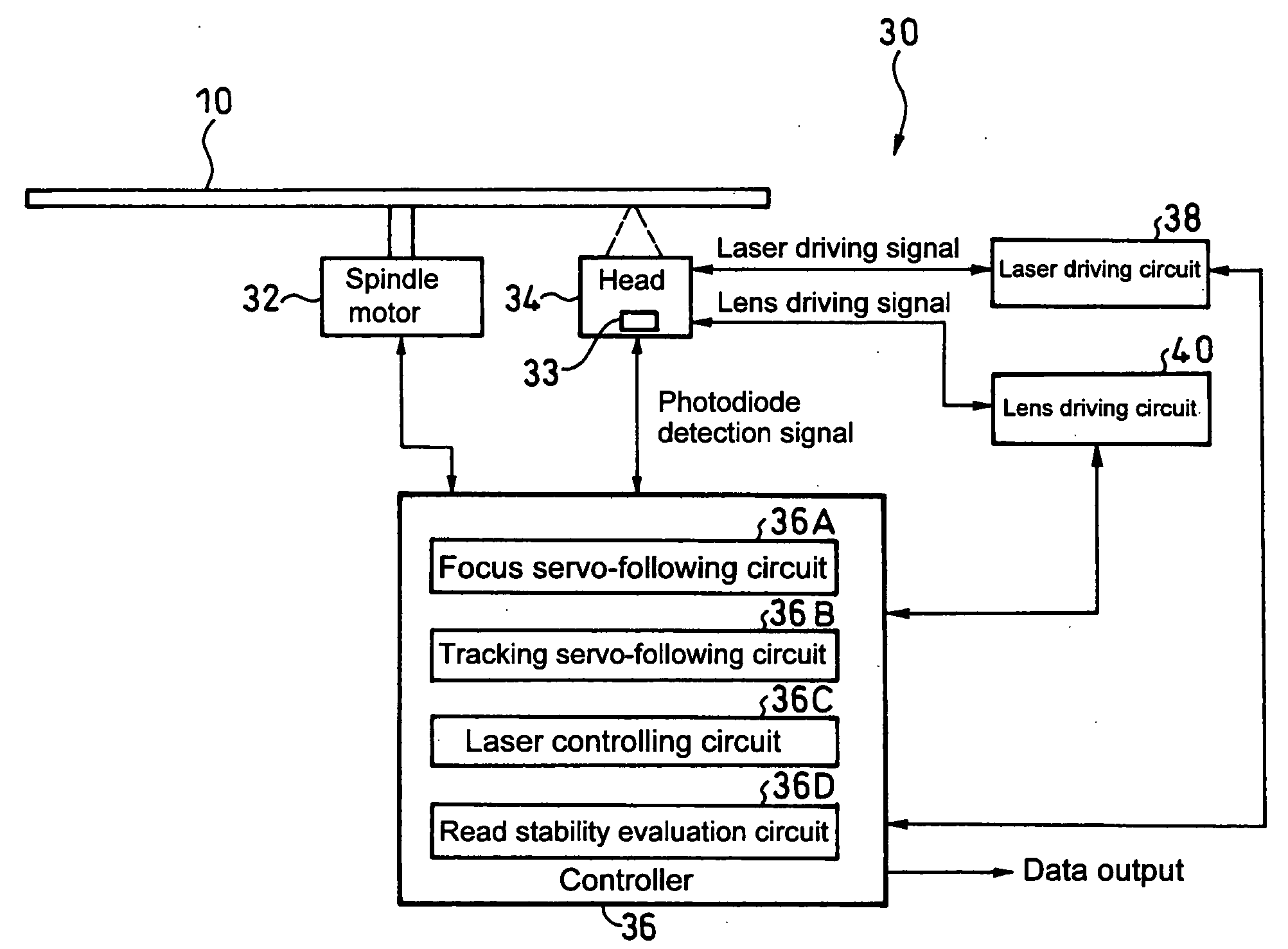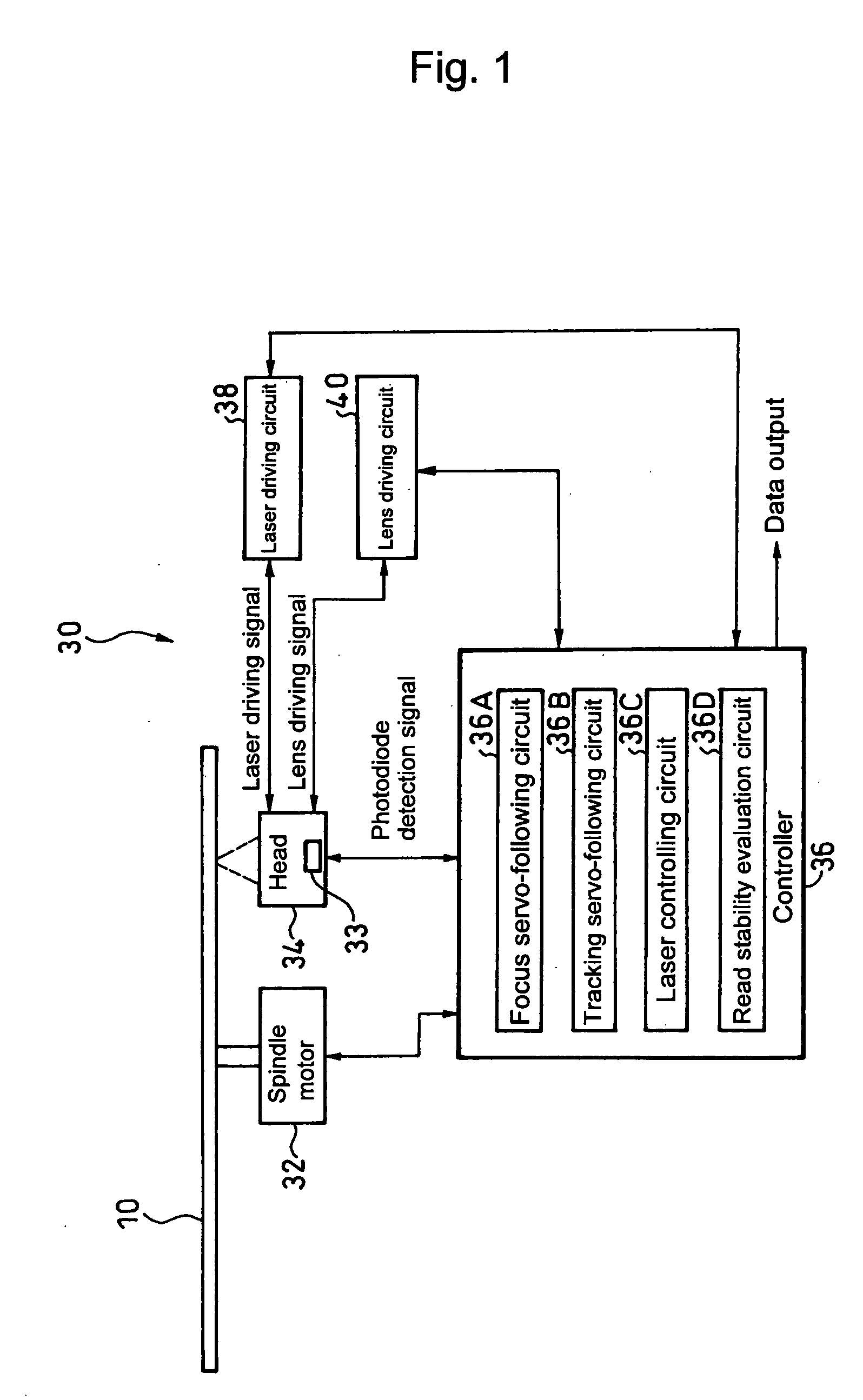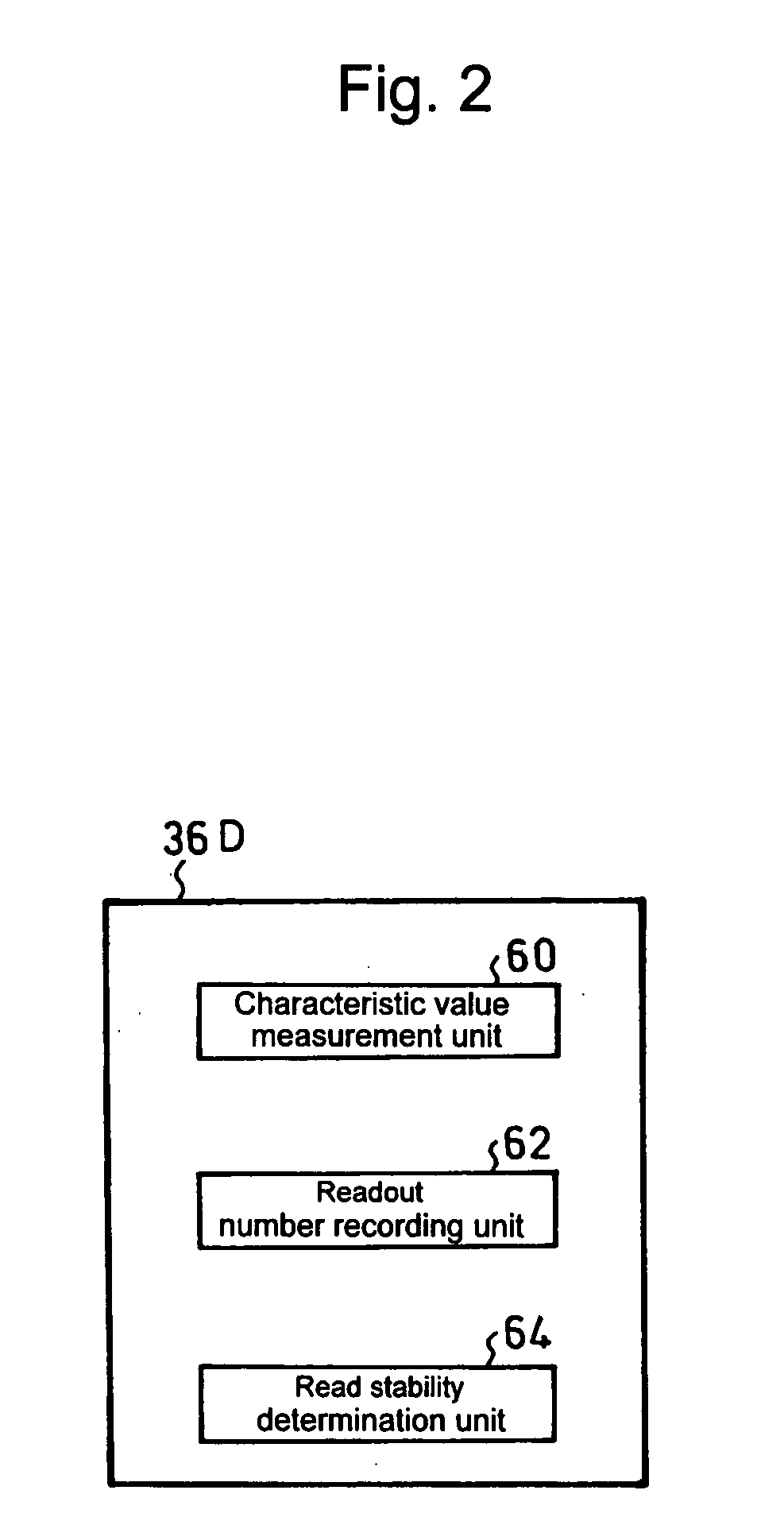Method for evaluating read stability of optical disc and information reproduction apparatus
a technology of information reproduction apparatus and optical disc, which is applied in the direction of digital signal error detection/correction, instruments, recording signal processing, etc., can solve the problems of laser deterioration, and achieve the effect of short tim
- Summary
- Abstract
- Description
- Claims
- Application Information
AI Technical Summary
Benefits of technology
Problems solved by technology
Method used
Image
Examples
embodiment
[0030]Hereinafter, an exemplary embodiment of the present invention is described in detail with reference to FIGS. 1 to 3.
[0031]An information reproduction apparatus 30 of this exemplary embodiment is shown in FIG. 1 and is configured to readout information from an optical disc 10 and to evaluate the read stability of the optical disc 10.
[0032]The information reproduction apparatus 30 is configured to include: a spindle motor 32 for rotating the optical disc 10; a head 34 which has a laser light source 33 and an optical system (not shown) and which is provided for projecting a laser beam onto the optical disc 10; a controller 36 for controlling the head 34 and the spindle motor 32; a laser driving circuit 38 which supplies a laser driving signal for modulating the laser beam from the head 34 into a pulse train; and a lens driving circuit 40 which supplies a lens driving signal to the head 34.
[0033]The controller 36 includes a focus servo-following circuit 36A, a tracking servo-follo...
example 1
MEASUREMENT EXAMPLE 1
[0059]Hereinafter, a description is given of Measurement Example 1 of the present invention.
[0060]In this Measurement Example, a super-resolution optical disc 10A shown in FIG. 4 was used as the optical disc.
[0061]A super-resolution optical disc is a disc having therein a layer for improving the resolution, whereby, in a reproduction optical system with a readout wavelength of λ and an objective lens numerical aperture of NA, a train of marks (bits) smaller than λ / (4NA) which is smaller than the resolution limit can be read.
[0062]As shown in FIG. 4, the super-resolution optical disc 10A is formed by stacking a first dielectric layer 14, a super-resolution layer 16, a second dielectric layer 18, a recording layer 20, a third dielectric layer 22, and a light transmission layer 24 in this order on a substrate 12.
[0063]The substrate 12 is formed of polycarbonate, for example.
[0064]Furthermore, each of the first dielectric layer 14, the second dielectric layer 18, an...
example 2
MEASUREMENT EXAMPLE 2
[0072]Hereinafter, a description is given of Measurement Example 2 of the present invention.
[0073]In this Measurement Example, the same super-resolution optical disc as in Measurement Example 1 was employed as the optical disc, except that a different combination of materials was used. Specifically, the super-resolution optical disc used was formed by stacking: a reflection film having a thickness of 40 nm and made of Ag:Pd:Cu=98:1:1; a first dielectric layer having a thickness of 20 nm and made of ZnS:SiO2=85:15; a super-resolution layer having a thickness of 10 nm and made of Bi50Ge50; a second dielectric layer having a thickness of 40 nm and made of ZnS:SiO2=85:15; a recording layer having a thickness of 4 nm and made of PtOx; a third dielectric layer having a thickness of 90 nm and made of ZnS:SiO2=85:15; and a light transmission layer having a thickness of 0.1 mm in this order on a polycarbonate substrate. The same method as in Measurement Example 1 was use...
PUM
| Property | Measurement | Unit |
|---|---|---|
| read durability | aaaaa | aaaaa |
| read stability | aaaaa | aaaaa |
| stability | aaaaa | aaaaa |
Abstract
Description
Claims
Application Information
 Login to View More
Login to View More - R&D
- Intellectual Property
- Life Sciences
- Materials
- Tech Scout
- Unparalleled Data Quality
- Higher Quality Content
- 60% Fewer Hallucinations
Browse by: Latest US Patents, China's latest patents, Technical Efficacy Thesaurus, Application Domain, Technology Topic, Popular Technical Reports.
© 2025 PatSnap. All rights reserved.Legal|Privacy policy|Modern Slavery Act Transparency Statement|Sitemap|About US| Contact US: help@patsnap.com



